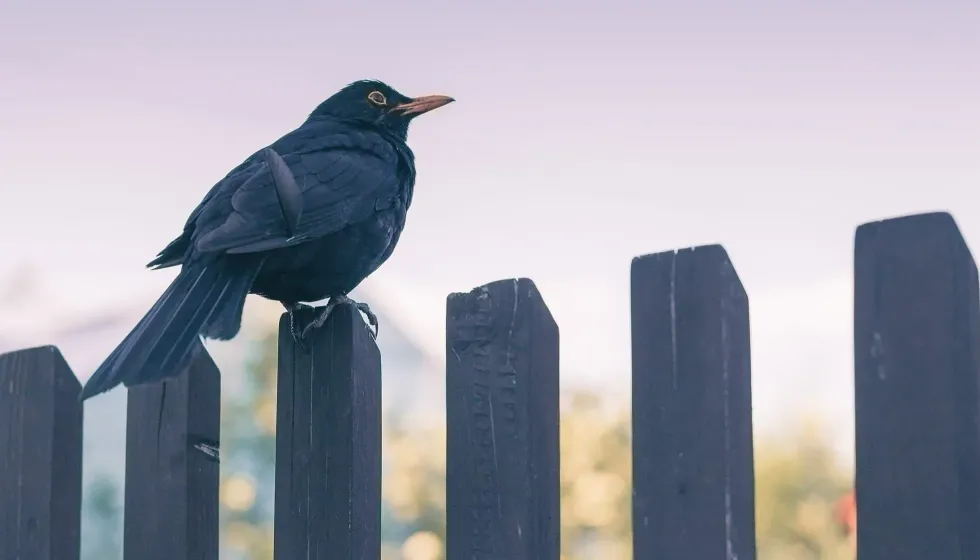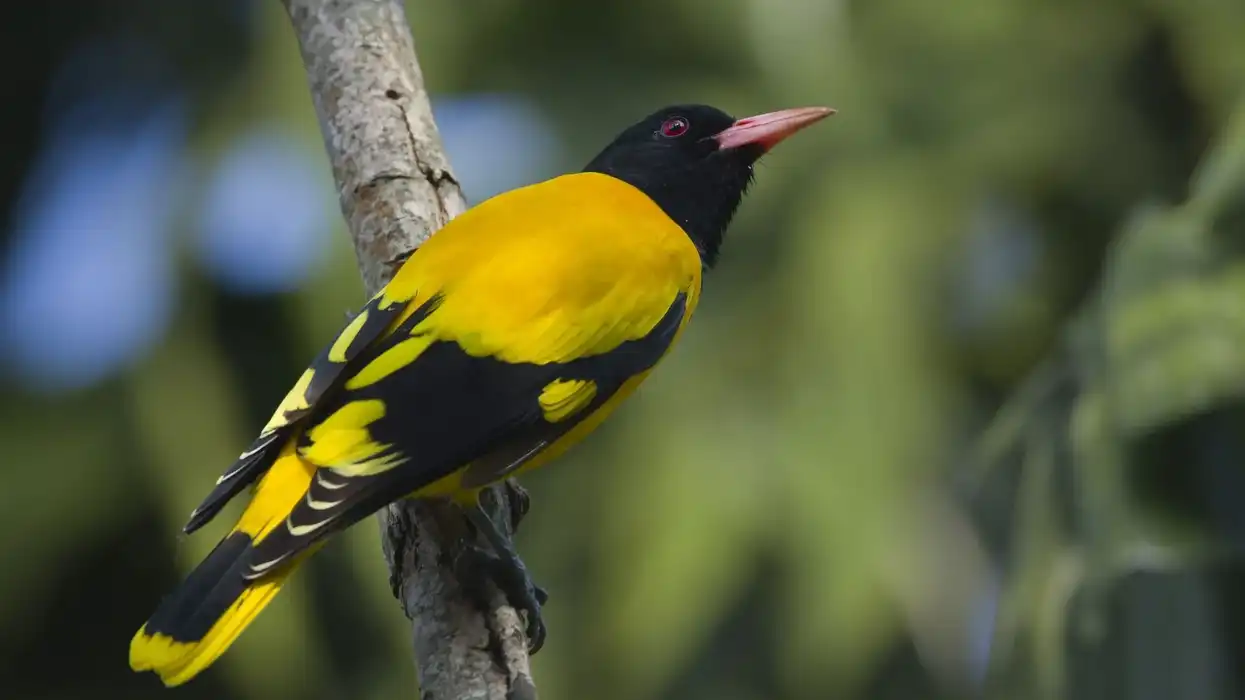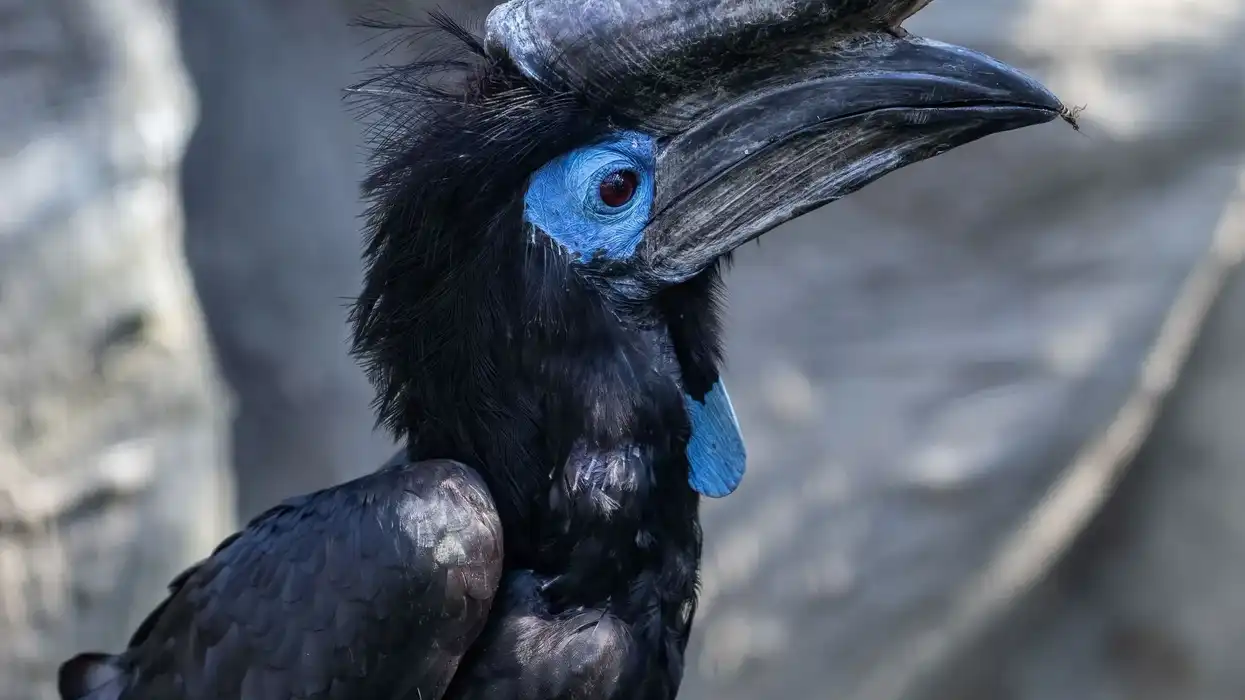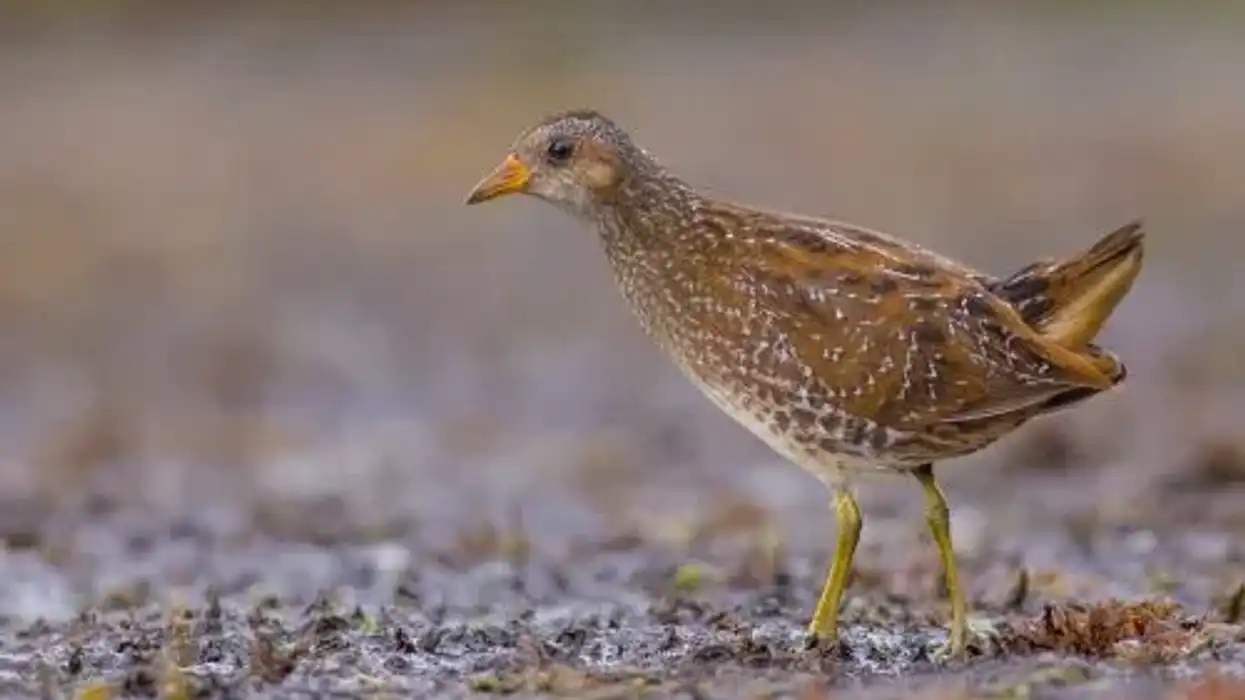The common blackbird (Turdus merula) is a wild bird found in mixed forests and urban areas of European, Asian, and North African countries. These birds live in forests, gardens, and other green areas and are mostly dependent on worms, fruits, and grains for food.
This bird is known for its bright yellowish beak and eyes, which are generally seen in adult males, whose body color is black.
The females are brown and are the ones responsible for building the nest. The nest is built in the shape of a cup and is made on trees and tree hollows.
Females take care of their eggs until they hatch after 14 days, and young blackbirds are fed food and taken care of by both parents.
The adult male is known for singing a song to attract a female during the breeding season and this song is very pleasant. A juvenile blackbird is brown just like its mother, and these species of blackbirds make pairs that mate for life!
If you like reading these common blackbird facts, you can also check other facts on wolffish and indri
Common Blackbird Interesting Facts
What type of animal is a common blackbird?
Common blackbirds are species of birds found mostly in Europe, Asia, and North Africa. The blackbirds are present in good numbers across various places worldwide and are also sometimes known as the Eurasian blackbird or the blackbird Turdus.
What class of animal does a common blackbird belong to?
The common blackbird species belong to the class of Aves. They belong to the Turdidae family and Turdus genus.
How many common blackbirds are there in the world?
According to studies conducted by the IUCN Red List, the total population of common blackbirds worldwide is estimated to be somewhere between 160 to 500 million. There are about 120 to 250 common blackbirds in the European continent alone, which means that there are approximately 40 to 80 million breeding pairs.
They are also spread across China, Taiwan, and Korea in fewer numbers. Their population seems to be growing healthily as of now so the IUCN has declared their conservation state to be Least Concern.
Where does a common blackbird live?
Common blackbirds were introduced to Australia and New Zealand and they are also found living in North Africa, India, Sri Lanka, Europe, and South China. During winter, they migrate from the north and east to Egypt, West Asia, and Southeast Asia. They are also called Eurasian blackbirds to distinguish them from other species of blackbirds in North America.
What is a common blackbird's habitat?
The habitat of the common blackbird includes places like rainforests, beach forests, and lush groves. They depend on worms, fruit, and seeds for food and are seen in public places like gardens (where they are considered a pest) quite often.
Who do common blackbirds live with?
This bird is anti-social and highly territorial. Apart from during the breeding season in March, adult male blackbirds live alone. Adult male blackbirds mark their territory during the breeding season to attract a female blackbird for mating and to start a family.
How long does a common blackbird live?
Common blackbirds usually have a life span of about three years, but due to several common blackbird adaptations, these birds are capable of living in different environments, and some of them are known to have lived for more than 10 years as well, which is awesome! The oldest recorded common blackbird lived for more than 21 years.
How do they reproduce?
During the breeding season (March to July), the adult male marks his territories in forests and gardens to attract or search for a female blackbird for mating. The female blackbird does most of the work by building a nest in the shape of a cup, made with the help of dry grass, mud, and fine grass.
The common blackbird's nests are made on trees, tree hollows, and shrubs and the female lays about three to five eggs. Common blackbird eggs are greenish-blue with red or brown dots around them.
The eggs are taken care of by only the females during the incubation period of 13-14 days until the eggs hatch and turn into chicks.
The chicks (juveniles) are fed with worms in gardens or caterpillars in the wild by the mating pair. Common blackbirds are monogamous, so these pairs mate for life.
What is their conservation status?
The current conservation status of the common blackbird is Least Concern. With around 160 million individuals distributed worldwide, the populations of these birds have been increasing rapidly over the years. The population of these birds is estimated to be between 120-250 million in European countries. They are also found in India, China, Australia, and more.
Common Blackbird Fun Facts
What do common blackbirds look like?
Males have a shiny black color body with a bright yellow eye-ring and beak, whereas females of this species of blackbirds are found with a brown-colored body with dark wings and tails and duller eyes.
Males change the color of their beaks from yellow to orange in winter and the common blackbird is known to have blackish-brown legs and a small round head.
The juvenile of this bird is identical to the females.
How cute are they?
Common blackbirds are not very cute to look at. Their yellowish eyes and beaks on their black or brown body give them an aggressive look rather than giving them a cute look.
The chicks can be cute, but when it comes to adult males and females, they are often quite intimidating. However, looks aside, common blackbirds are clever little birds that are also friendly to humans. On rare occasions, they are even spotted sitting on human shoulders and hands.
How do they communicate?
This blackbird communicates via different sounds, calls (it can sing also), and visuals. In the visual action, the males lean forward, puff up their body or show off their colorful shoulders in various situations.
They are loud birds, and the common blackbird sound can be heard in forests and gardens even if they are far away. They sing to establish their territories.
Common blackbird males also sing to attract common blackbird females during their breeding season between March to July. Common Blackbird call consists of a 'pook-pook' sound when it spots any predators in its vicinity.
How big is a common blackbird?
A common blackbird can grow up to 9-11 in (24-27 cm) in length. These are medium-sized birds that are almost three times the size of hummingbirds.
How fast can a common blackbird fly?
The speed at which a common blackbird flies has not been officially recorded. However, most birds of this size fly at about 10-30 mph (15-50 kph).
How much does a common blackbird weigh?
Common blackbirds weigh approximately 2.8-4.4 oz (85-125 g). They are not very big birds but are found in huge populations across Europe particularly.
What are their male and female names of the species?
They do not have gender-specific names.
What would you call a baby common blackbird?
A baby common blackbird is referred to as a 'chick'. The chick resembles the females more than the male and is brown, unlike the black male birds.
What do they eat?
The common blackbird is known to be an omnivore. The food it eats includes worms, caterpillars, fruits, and seeds. On the other hand, this bird is generally hunted by hawks, domestic cats, and foxes in the wild and in urban places like gardens and parks.
Are they dangerous?
The common blackbird can be aggressive and territorial if it feels threatened but it does not often attack humans.
Would they make a good pet?
Depending on where you live, common blackbirds can only be kept as pets if you possess the necessary license. So make sure you check with your local wildlife authorities. They are wild birds who will flourish better in the wild so it is best not to own them as pets.
Did you know...
In an event where it lays four eggs, the male takes care of two eggs, and the female takes care of the other two, separately but within their marked territories.
The common blackbird male, when attracting a female, will show off its beak. Females choose males with orange beaks as it shows the male's foraging capabilities.
The song that the blackbird sings is mellow, unlike other loud noises they make to communicate. This bird is a clever animal and can easily recognize a human. The song they sing is very pleasant.
These blackbirds are considered spiritual messengers, and their color, black, symbolizes death, magic, and change. So there is not just one common blackbird spiritual meaning, there are many for different people!
Do female blackbirds have yellow beaks?
Yes, a common blackbird female does have a yellow beak, but it will be duller compared to the male's bright beak.
Do blackbirds mate for life?
Yes, the common blackbird is monogamous and is known to keep the same mating partner throughout its life. Unlike most other birds, they do not lay eggs on the same nest but rather build a new nest in gardens and trees each time they mate.
Here at Kidadl, we have carefully created lots of interesting family-friendly animal facts for everyone to discover! Learn more about some other birds, including the tawny eagle, or the macaroni penguin.
You can even occupy yourself at home by drawing one on our common blackbird coloring pages.










